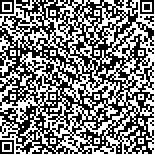郑雅文,王强,侯园园,等.骶神经植入式电刺激与骶神经磁刺激治疗难治性神经源性膀胱的疗效对比[J].中华物理医学与康复杂志,2025,47(5):430-435
扫码阅读全文

|
| 骶神经植入式电刺激与骶神经磁刺激治疗难治性神经源性膀胱的疗效对比 |
|
| |
| DOI:10.3760/cma.j.cn421666-20240813-00652 |
| 中文关键词: 骶神经植入式电刺激 重复磁刺激 神经源性膀胱 脊髓损伤 难治性 |
| 英文关键词: Sacral nerve stimulation Neuromodulation Magnetic stimulation Neurogenic bladder Spinal cord injury |
| 基金项目: |
|
| 摘要点击次数: 1663 |
| 全文下载次数: 1442 |
| 中文摘要: |
| 目的 比较骶神经植入式电刺激(SNES)与骶神经磁刺激(SNMS)治疗难治性神经源性膀胱(NB)的疗效。 方法 纳入难治性脊髓损伤或马尾神经损伤后NB患者46例,按随机数字表法分为SNMS组和SNES组,每组患者23例。2组患者均给予膀胱基础干预治疗,SNMS组在此基础治疗上进行骶3(S3)神经根区SNMS治疗,每日1次,每次21 min,每周5 d,连续治疗4周;SNES组则在膀胱基础干预治疗的基础上接受24 h不间断的SNES治疗,连续治疗4周。比较2组治疗前和治疗4周后(治疗后)的膀胱压力容量评定指标、排尿日记指标和中文版简易版健康评估量表(SF-Qualiveen)评分。 结果 治疗后,2组的膀胱安全容量、日均排尿次数、日均单次排尿量、日单次最大排尿量、日均导尿次数、日单次最大导尿量较组内治疗前均有明显改善(P<0.05)。治疗后,SNES组的最大膀胱腔内压(储尿期)、膀胱顺应性、日均单次导尿量、SF-Qualiveen评分较组内治疗前均明显改善(P<0.05)。治疗后,SNES组的膀胱安全容量[(361.05±64.76)ml]、膀胱顺应性[(49.02±22.88)ml/cmH2O]、日均排尿次数[1.50(0.00~5.05)]、日均单次排尿量[(118.50(0.00~172.50)ml]均明显高于SNMS组治疗后,差异均有统计学意义(P<0.05);而SNES组治疗后的最大膀胱腔内压、日均单次导尿量、SF-Qualiveen评分均明显低于SNMS组治疗后,差异均有统计学意义(P<0.05)。 结论 SNMS和SNES均可在短期内改善难治性NB患者的储尿和排尿功能,但SNES的临床疗效更佳,且可更显著地改善NB患者的生活质量。 |
| 英文摘要: |
| Objective To compare the effectiveness of sacral nerve electric stimulation (SNES) and sacral nerve magnetic stimulation (SNMS) in treating patients with refractory neurogenic bladder (NB). Methods Forty-six patients with NB after a spinal cord or cauda equina injury were randomly divided into an SNMS group and an SNES group, each of 23. In addition to basic bladder intervention, the SNMS group was treated with SNMS in the sacral 3 (S3) nerve root area once a day for 21 minutes, 5 days a week for 4 weeks. The SNES group received 24h uninterrupted SNES treatment for 4 consecutive weeks. The bladder pressure-volume assessment indexes, voiding diary indexes, and scores on the Chinese version of the Simplified Health Assessment Scale (SF-Qualiveen) were compared between the two groups before and after 4 weeks of treatment. Results After the treatment, the safe bladder capacity, average daily number of micturitions, average daily single micturition volume, average daily single maximum micturition volume, average daily number of catheterizations, and average daily single maximum catheterization volume of both groups had improved significantly. After the treatment, the maximum intravesical pressure of the bladder (storage period), bladder compliance, average daily single catheterization volume, and SF-Qua-liveen scores of the SNES group had improved significantly. And that group′s average safe bladder capacity, bladder compliance, daily number of micturitions and average daily single catheterization volume were significantly better than the SNMS group′s averages. The SNES group′s average maximum intravesical bladder pressure and average SF-Qualiveen score were also significantly better. Conclusion Both SNMS and SNES can improve urine storage and voiding for those with refractory NB in the short term, but SNES is clinically more effective and better improves patients′ life quality. |
|
查看全文
查看/发表评论 下载PDF阅读器 |
| 关闭 |
|
|
|